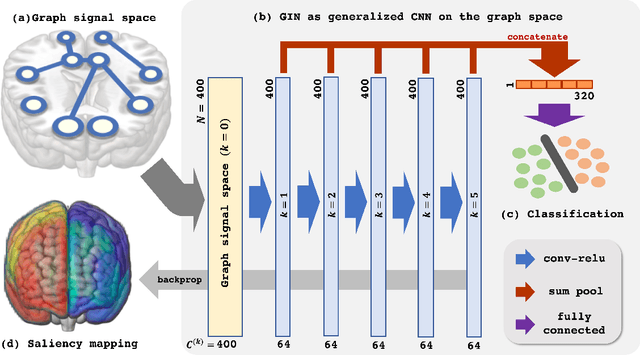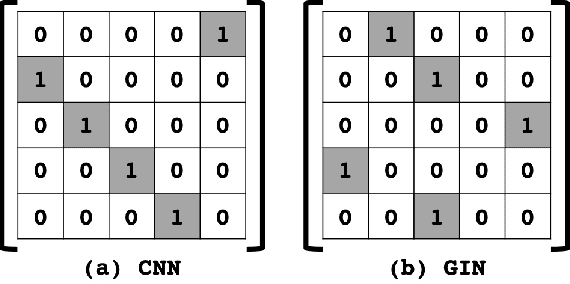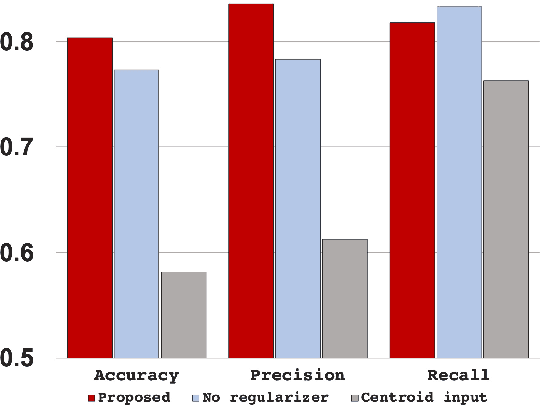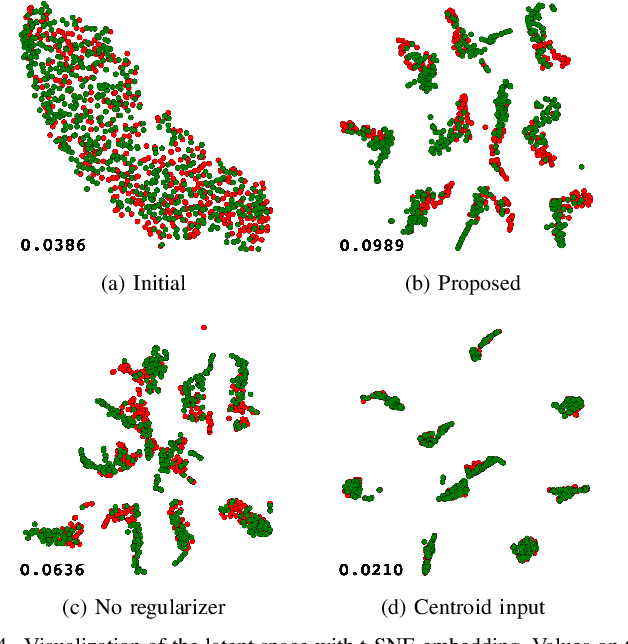Understanding Graph Isomorphism Network for Brain MR Functional Connectivity Analysis
Paper and Code
Jan 10, 2020



Graph neural networks (GNN) rely on graph operations that include neural network training for various graph related tasks. Recently, several attempts have been made to apply the GNNs to functional magnetic resonance image (fMRI) data. Despite the recent progress, a common limitation is its difficulty to explain the classification results in a neuroscientifically explainable way. Here, we develop a framework for analyzing the fMRI data using the Graph Isomorphism Network (GIN), which was recently proposed as a state-of-the-art GNN for graph classification. One important observation in this paper is that the GIN is a realization of convolutional neural network (CNN) with two-tab filters in the graph space where the shift operation is realized using the adjacent matrix. Based on this observation, we visualize the important regions of the brain by a saliency mapping method of the trained GIN. We validate our proposed framework using large-scale resting-state fMRI data for classifying the sex of the subject based on the graph structure of the brain. The experiment was consistent with our expectation such that the obtained saliency map show high correspondence with previous neuroimaging evidences related to sex differences.
 Add to Chrome
Add to Chrome Add to Firefox
Add to Firefox Add to Edge
Add to Edge